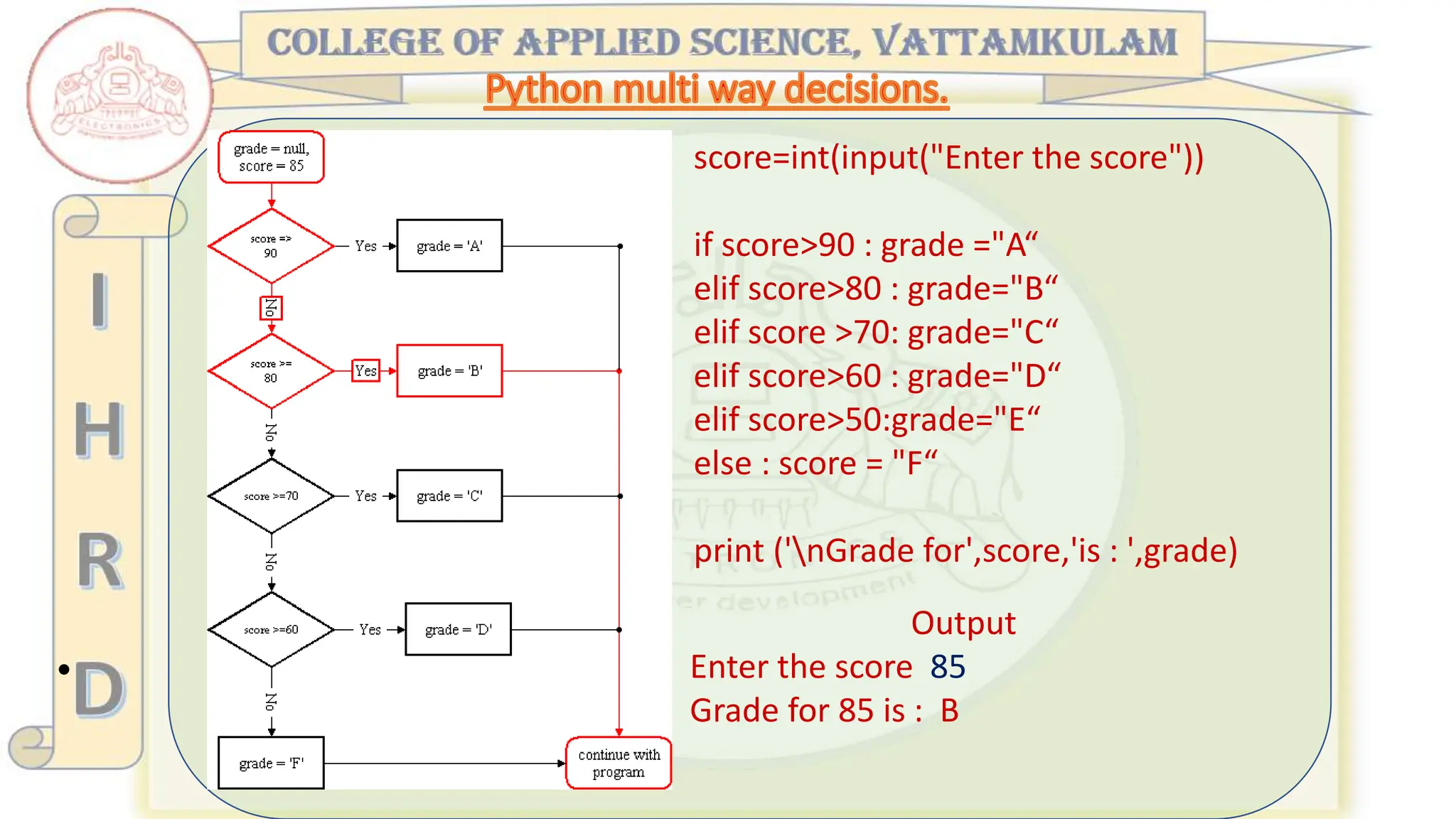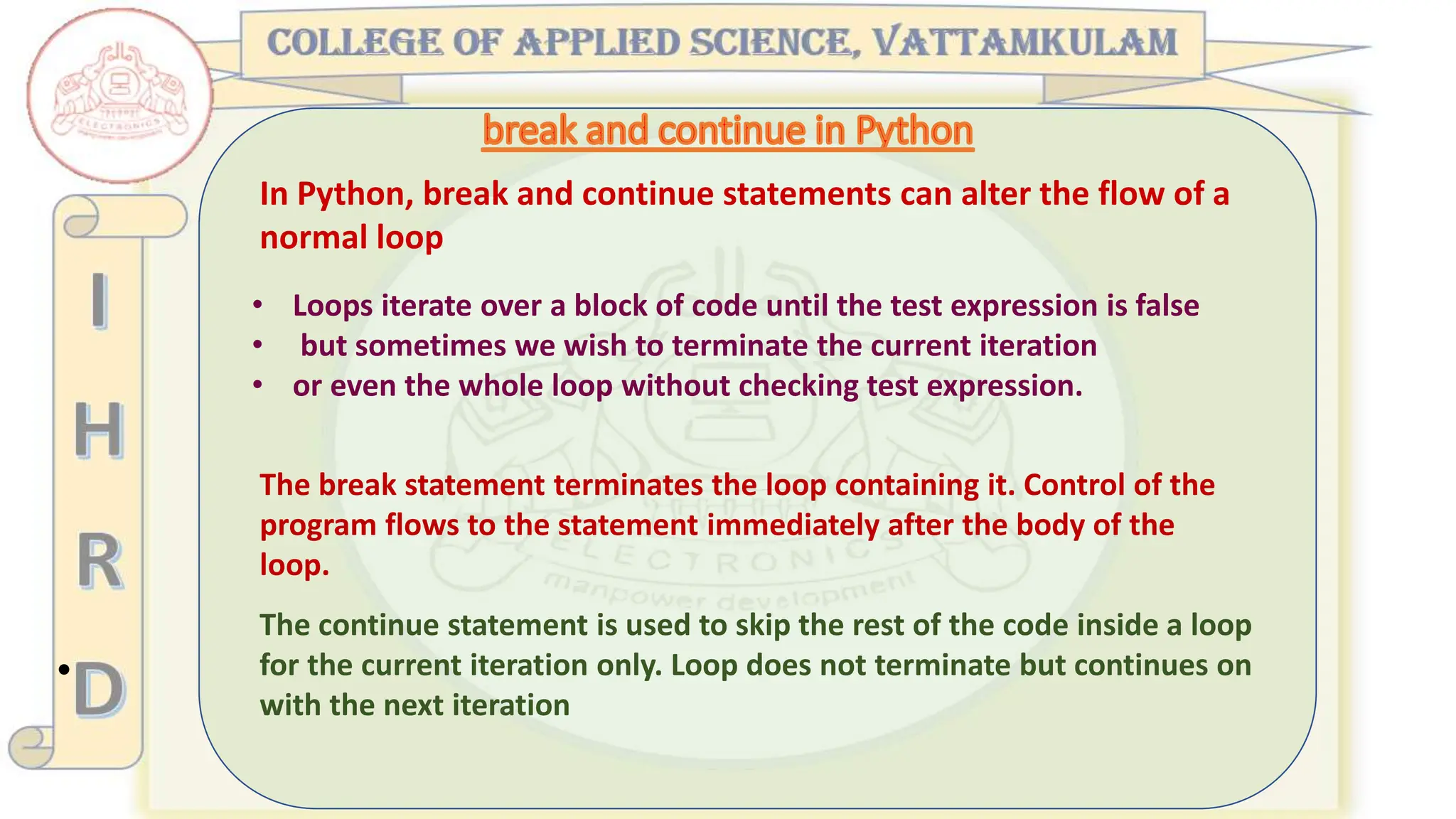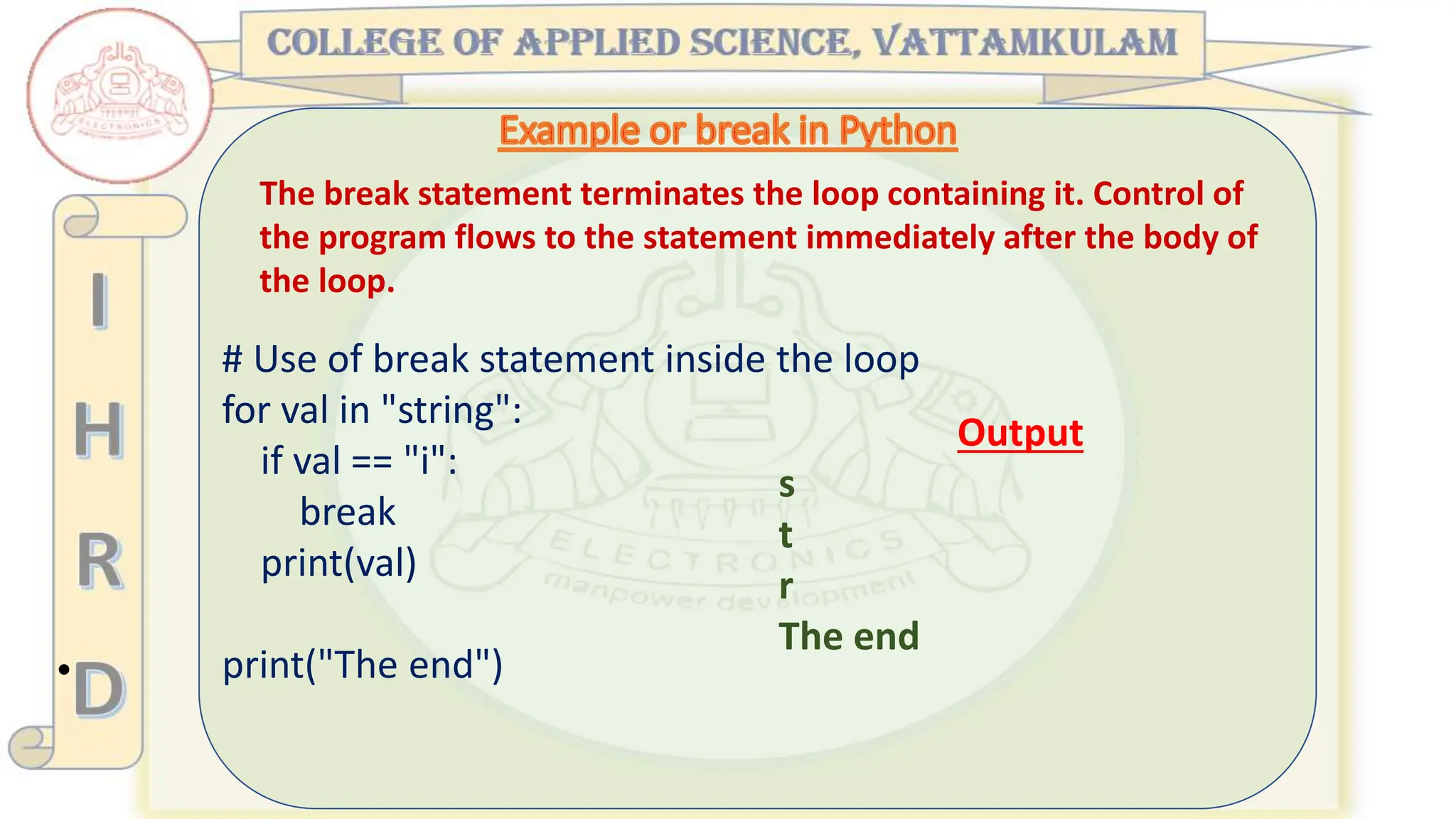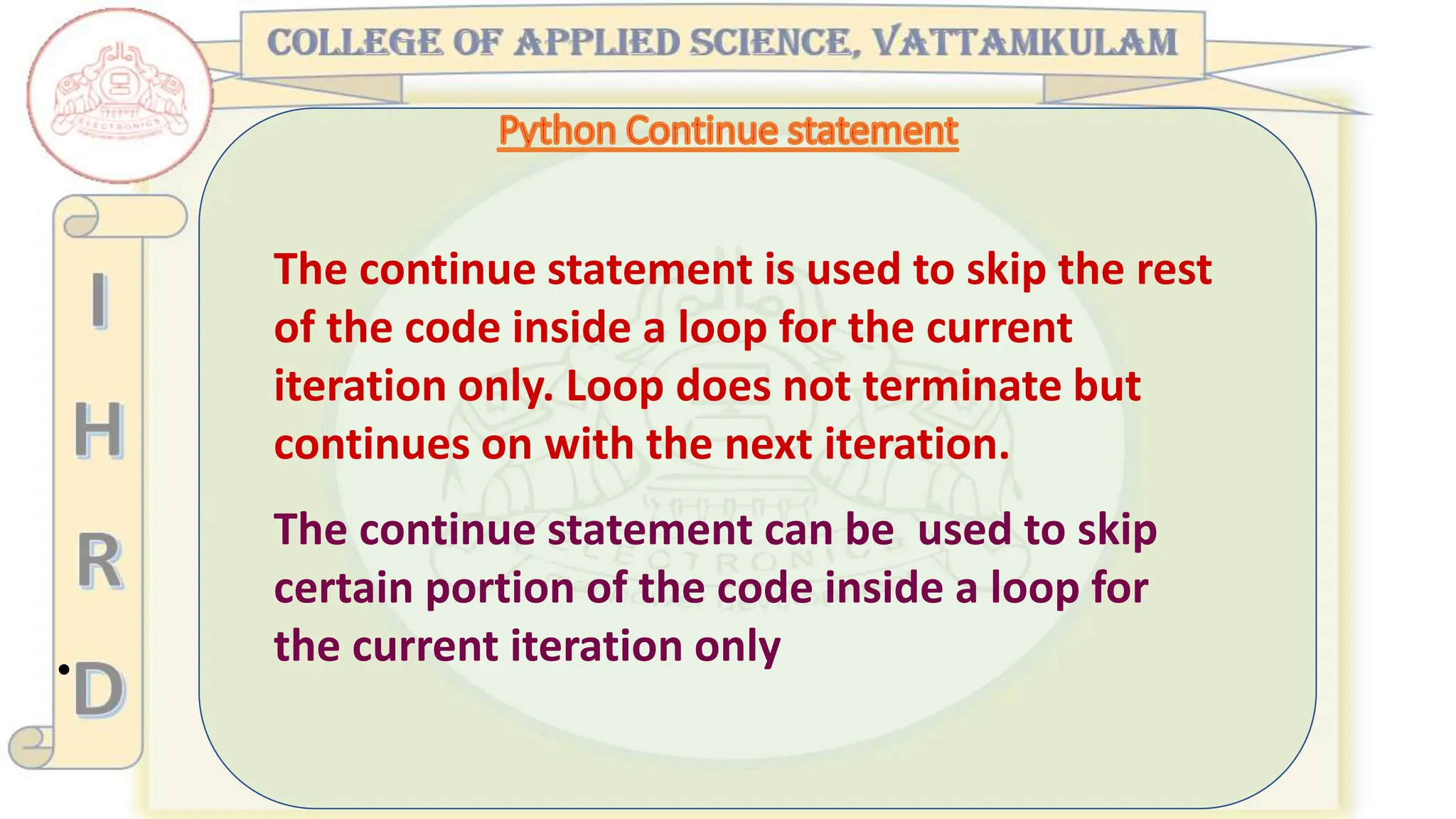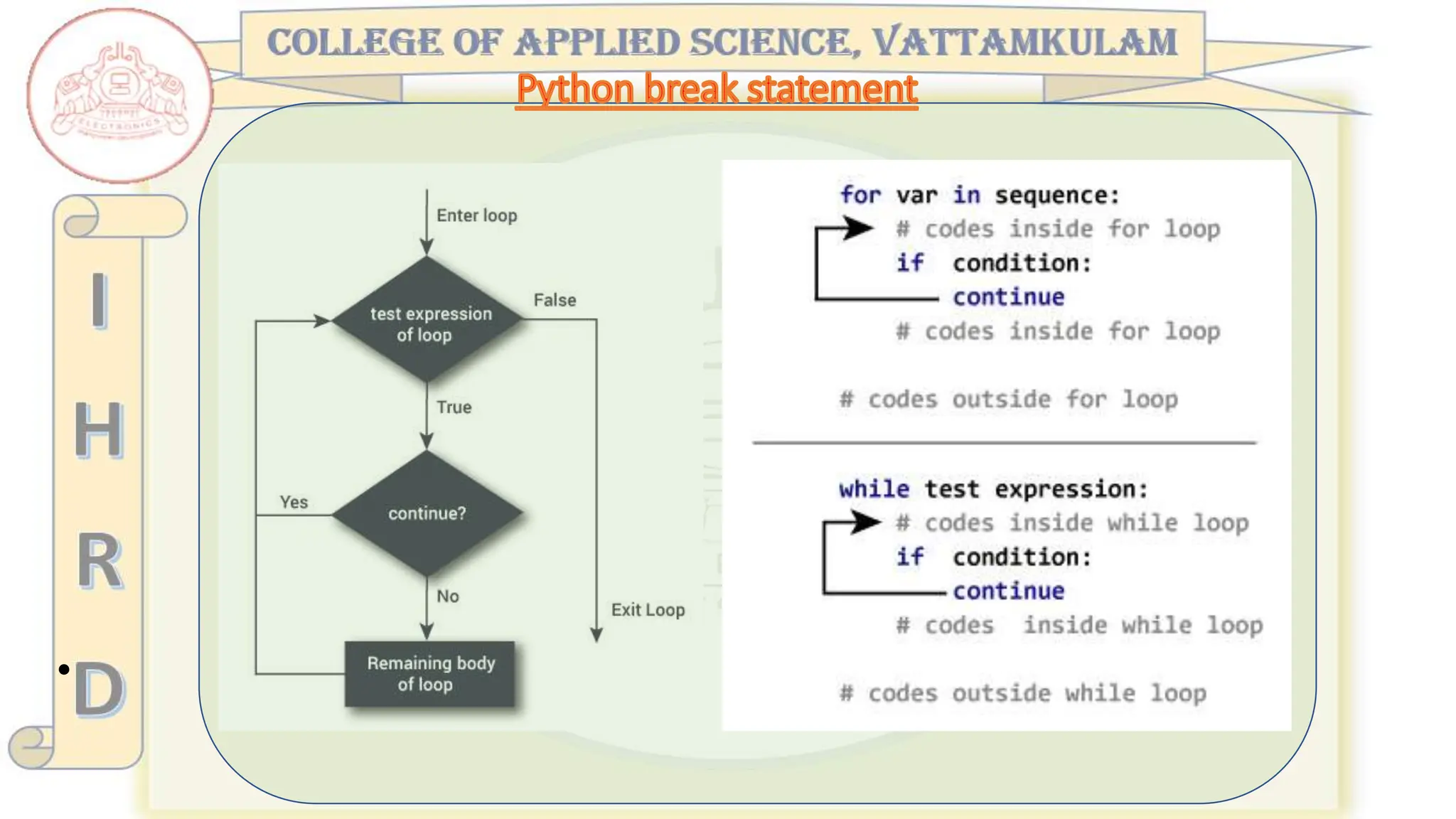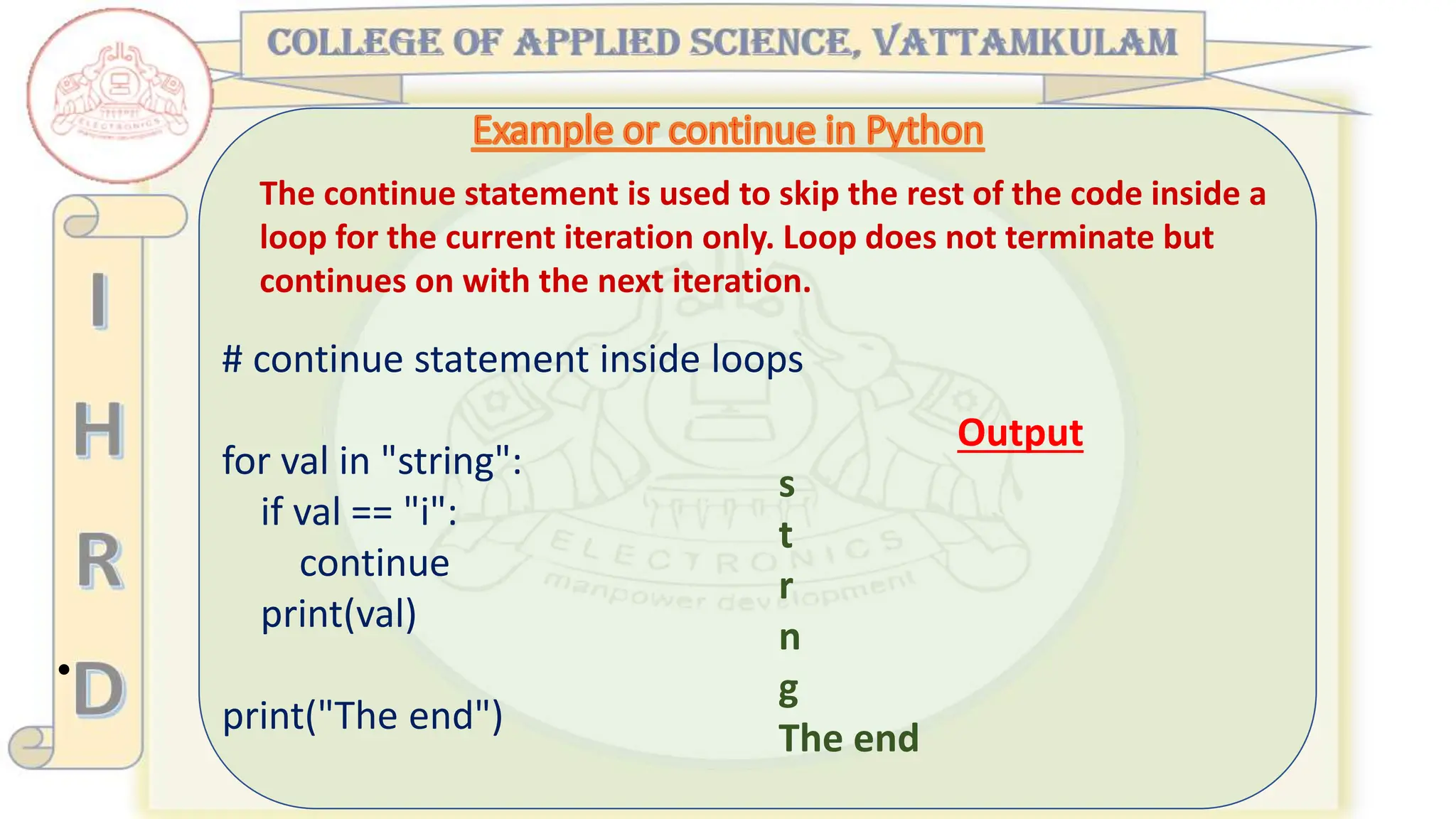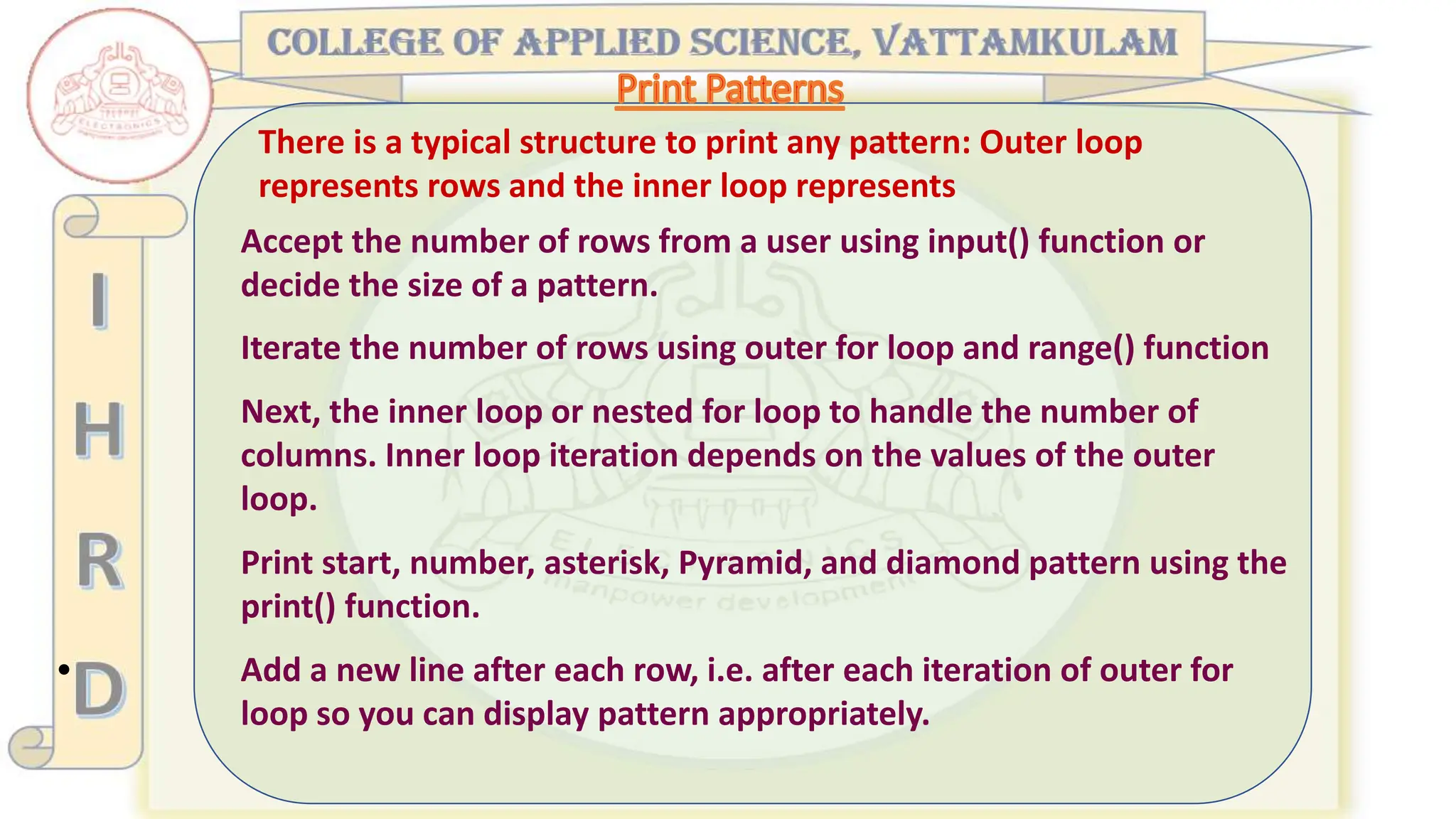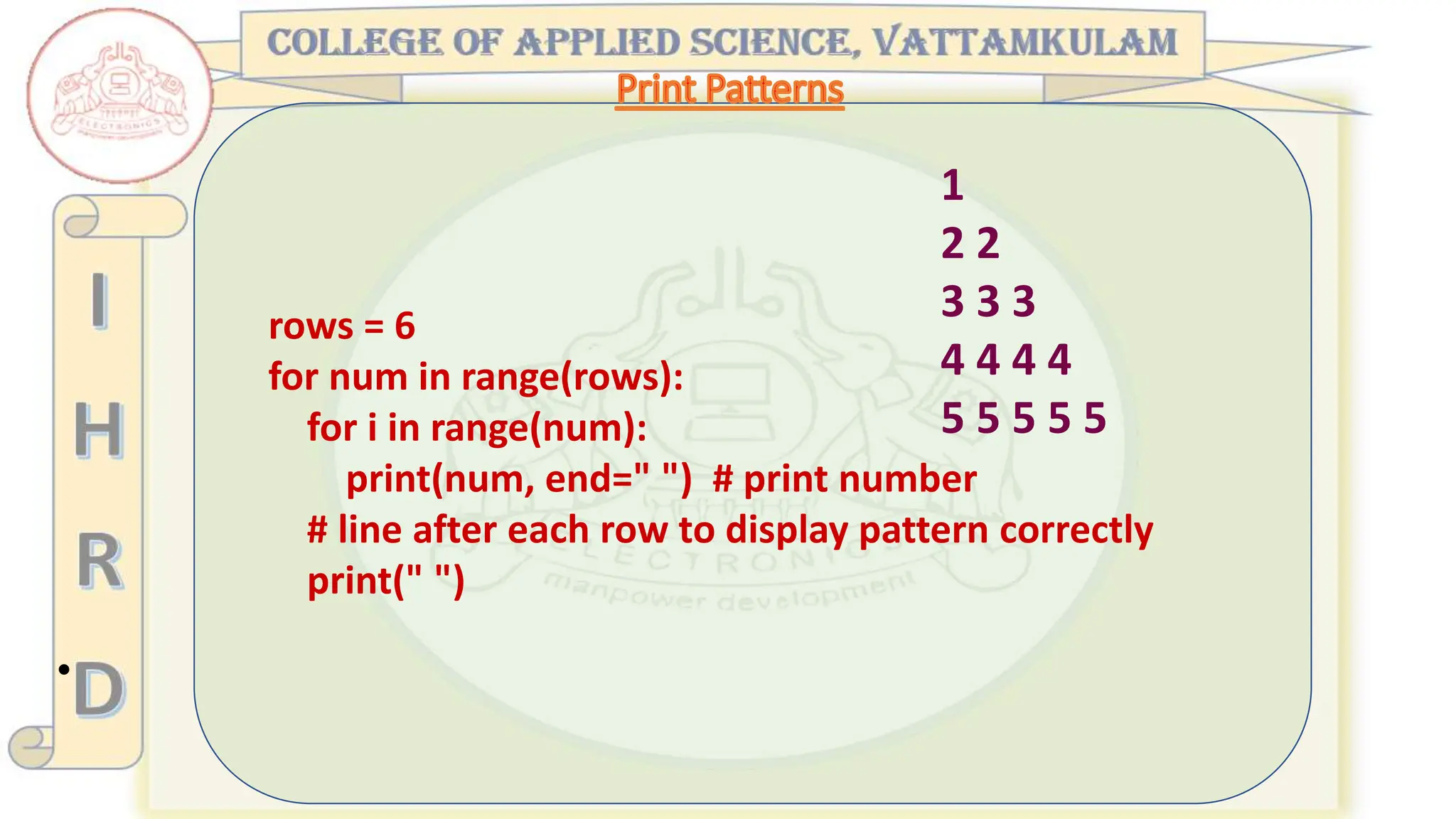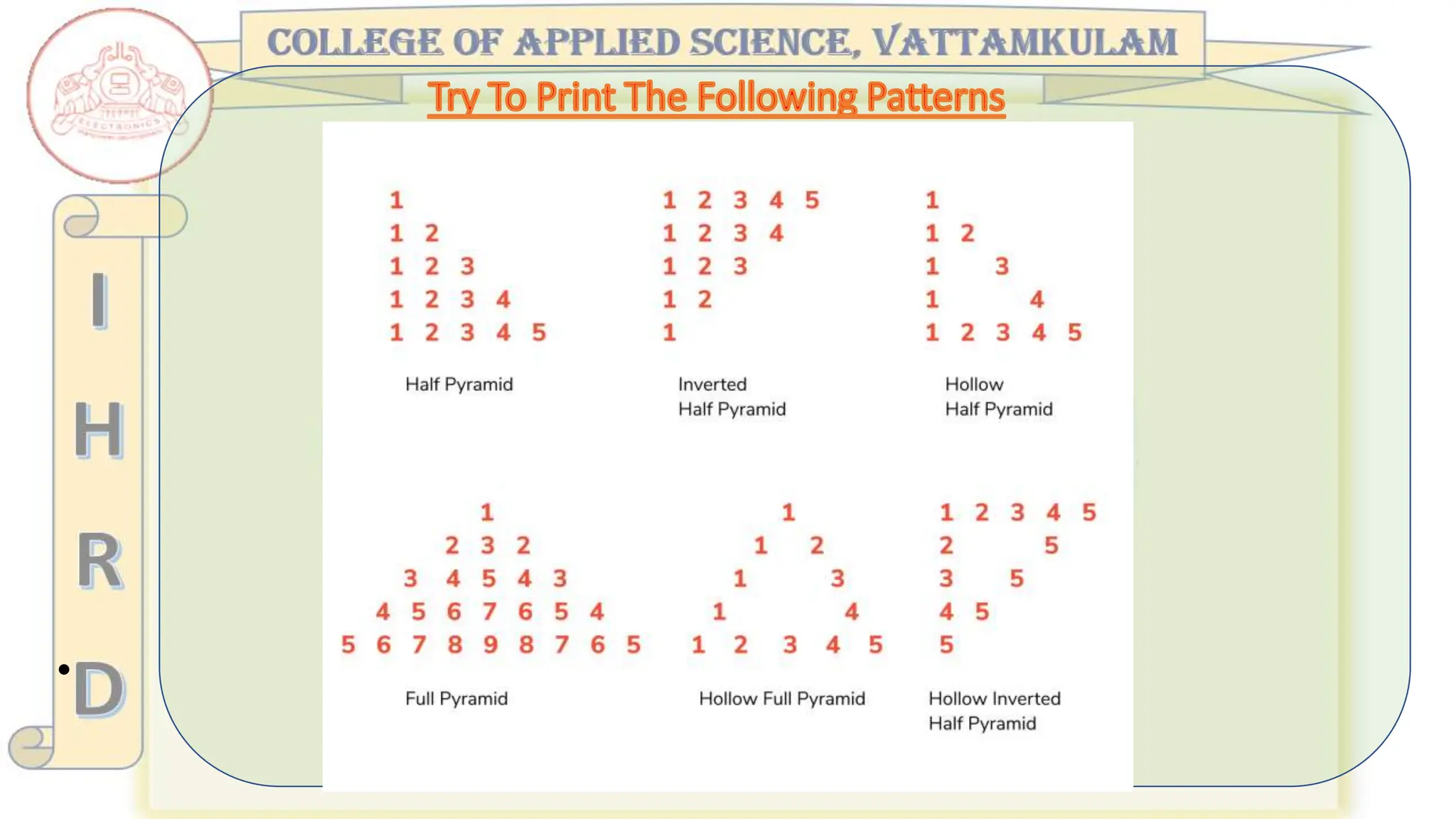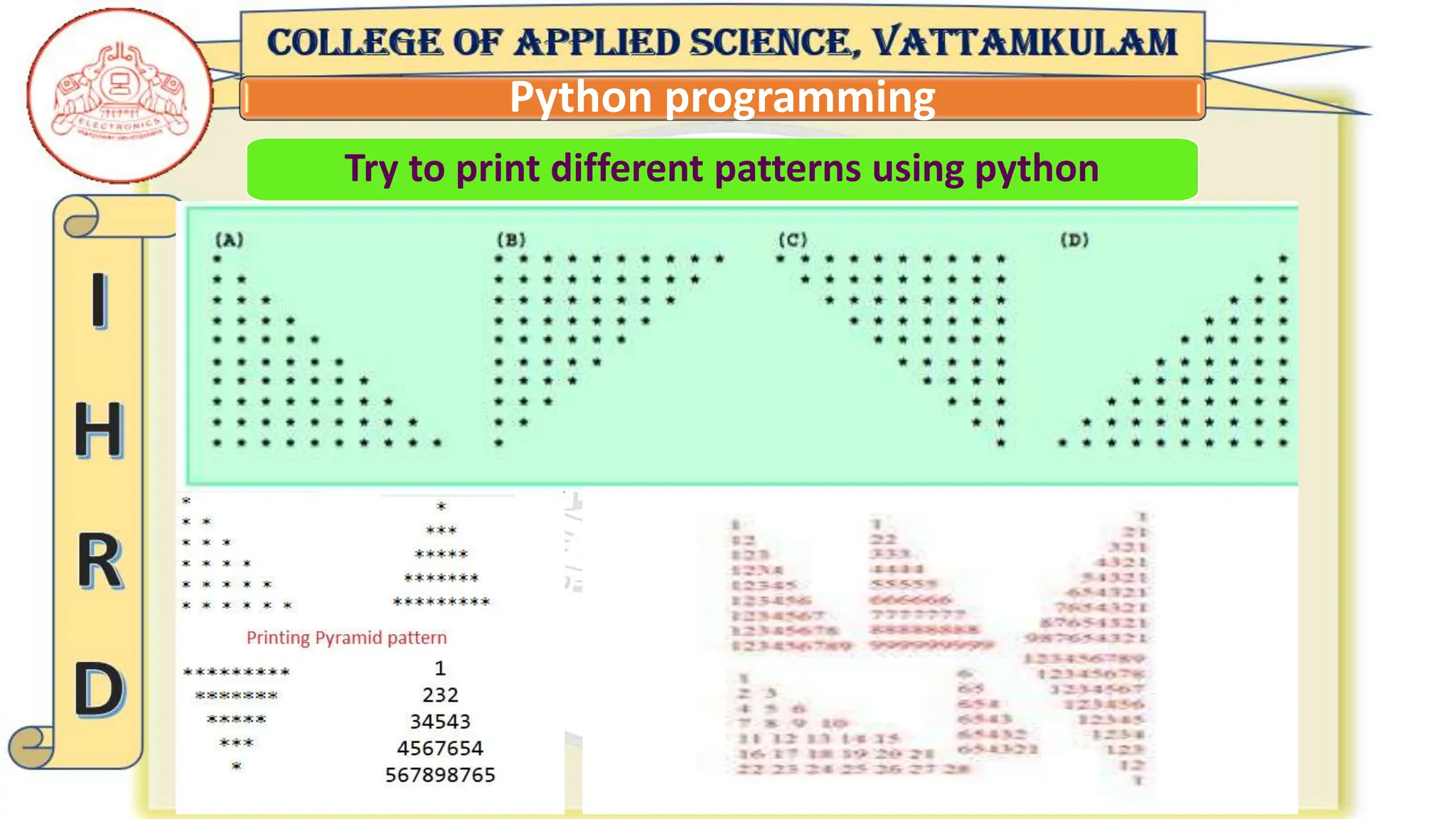The document discusses Python's break and continue statements and how they can alter the normal flow of a loop. It provides examples of using break to terminate a loop entirely, and continue to skip the remaining code in the current iteration and move to the next one. It also discusses printing patterns using nested for loops, with the outer loop representing rows and the inner representing columns. The user is prompted to input the number of rows, then nested for loops print the pattern by iterating the number and columns on each line.

